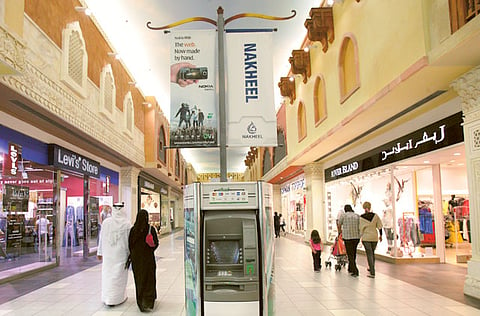Zero interest rates a sign of the times
US economic cycle may coincide with Gulf for rates to move in tandem

Minds drift in the summer lull, and rightly so. There has to be the opportunity to step back from the everyday hustle. As economists have belatedly noted, prosperity and contentment relate to matters beyond GDP and other data.
The Olympic Games may be your preferred distraction. Apart from the competitive events themselves, the sight of London’s hitherto damp summer might even have offered some relief amid the sweltering heat of the Gulf.
Equally, being of analytical persuasion, you might be preoccupied with the transmission mechanism of monetary policy, as an idle pastime. Maybe, maybe not.
Two sets of researchers at the IMF found themselves publishing their thoughts on such technical matters earlier this year (see box). Like the proverbial London buses, two came along at the same time (surprisingly not a third).
The reason those who follow the business cycle in this region might be interested is that, as mentioned in passing here last week, the key setting of interest rates, as determined by the US Fed via the dollar peg, remains extraordinarily low. Moreover, the American central bank has publicly declared that they are committed to remain near zero through this year, through next year, and at least to late 2014.
That’s a serious sign of the times, with a big knock-on effect around the world.
Of course, it so happens that the business environment in the GCC economies remains soft enough that the return of higher, normalized interest rates might impart too much of a shock. Anywhere that an overload of debt was instrumental in exaggerating the prior upswing and ensuing downswing will face that dilemma.
But, at these rates, how would things be different next time?
It might just be a matter of hoping that the US economic cycle coincides sufficiently with the Gulf’s own cycle for interest rates to move comfortably in tandem with regard to prevailing circumstances.
Yet in recent history that idea has been something of a stretch, especially and naturally because of the pivotal role of the oil price.
Exporting and importing countries will obviously have rather different economic experiences based on which side of the energy bill they stand.
It is that polar opposite position on real income streams which renders the dollar peg an imperfect benchmark, although it has other virtues.
Economists have some reassuring words on the Gulf’s situation, though.
“There isn’t actually a mismatch with the US at the moment,” says Monica Malik, chief economist at EFG-Hermes in Dubai. “Inflation is weak, and although growth has picked up, largely based on fiscal policy, there aren’t the same speculative inflows as a few years ago. Also, bankers are more cautious about lending practices.” And on a 2-3 year horizon? “We don’t expect those [sort of] pressures,” she advised.
Said Hirsh, Middle East analyst at Capital Economics notes the complementary measures available to moderate the cycle. “Central banks can use bank reserve ratios and open market operations (T-bills) to counteract overheating or vice versa. I believe SAMA has been doing that [in Saudi Arabia] over the past few months, in an attempt to manage excess liquidity in the financial system.”
Moreover, “fiscal policy is the key policy tool for governments in the Gulf. Its importance is that it directly influences the real economy, and filters into the financial system, through deposits for example, hence boosting liquidity.”
There is, however, as in many societies, a complication. “Government spending in the Gulf is of course not decided on purely economic terms. Political and other considerations also matter; hence the blurriness between the pro- and counter-cyclicality features.”
Then there are the special concerns of money and the banking sector at present, offset by the financial surplus that acts as a cushion for the region.
“Credit growth is still weak,” says Hirsh, “so we are not in the same position as in 2008. Moreover, both the banking system in general (with a few exceptions) and governments are in a good position.”
Good to know. Maybe it’s not such an Olympian task for policymakers after all.
Sign up for the Daily Briefing
Get the latest news and updates straight to your inbox



